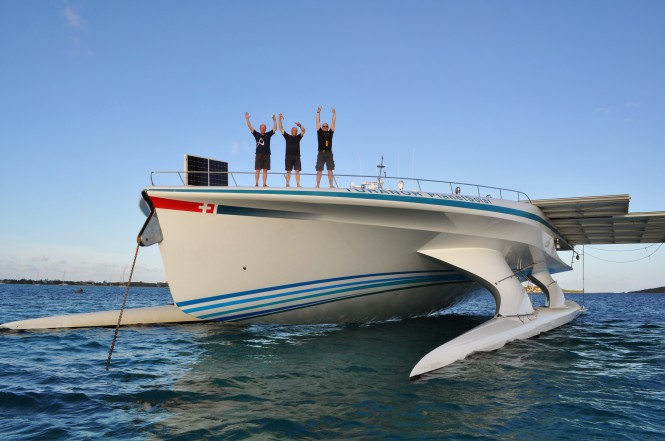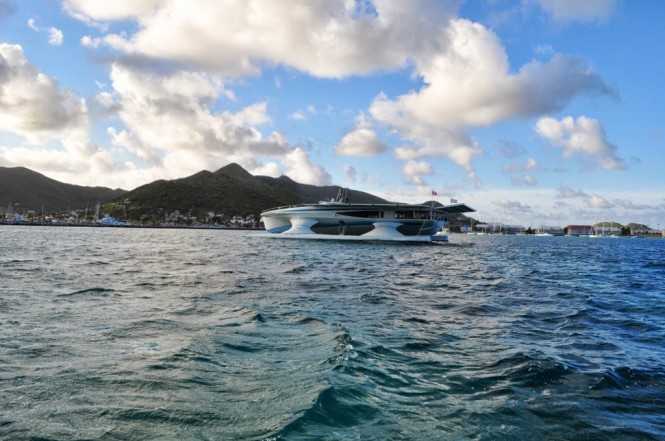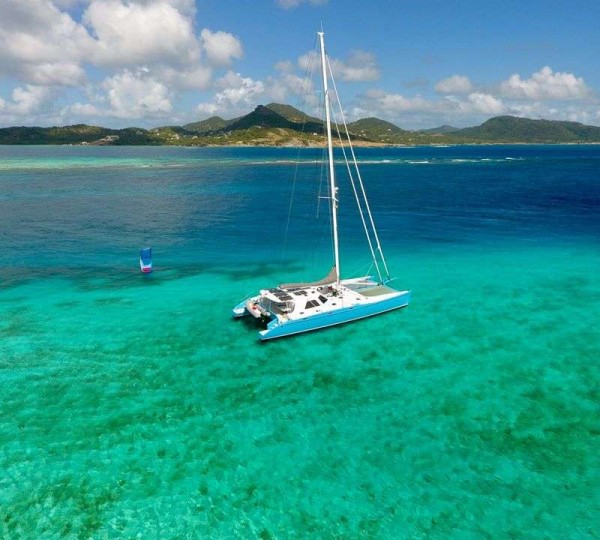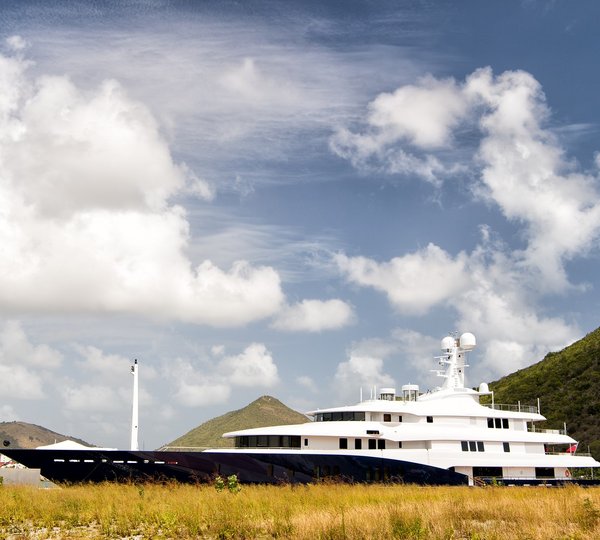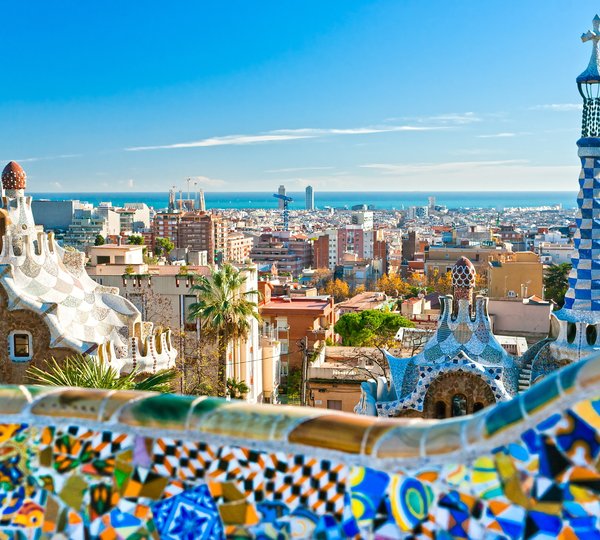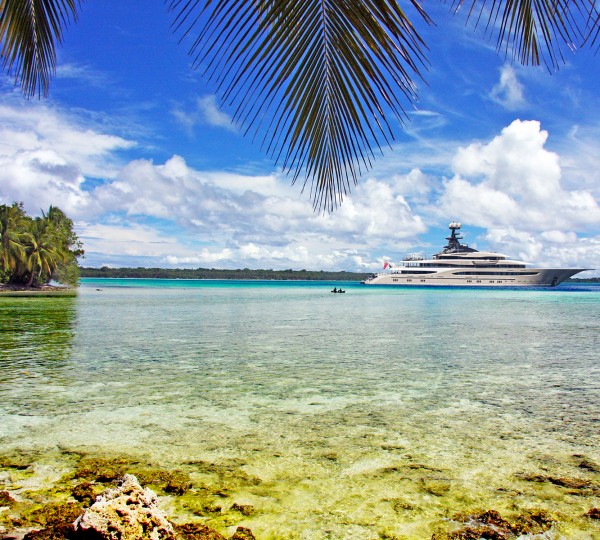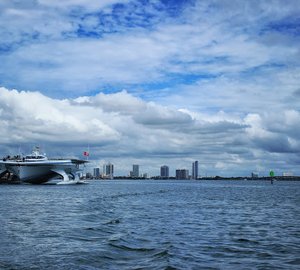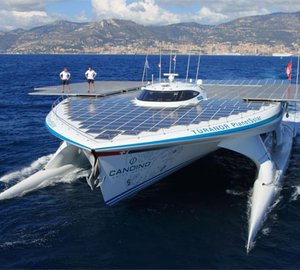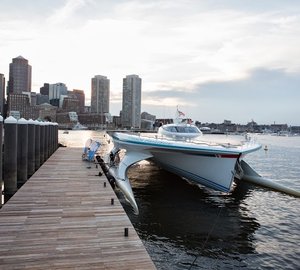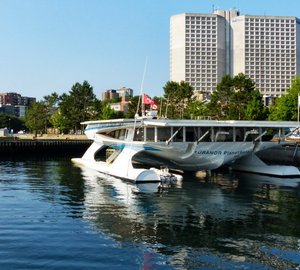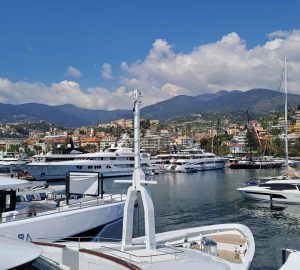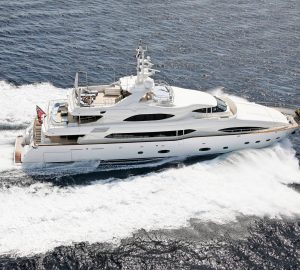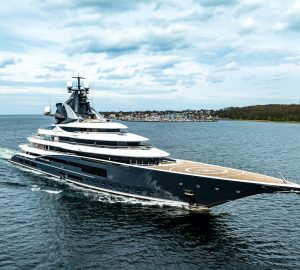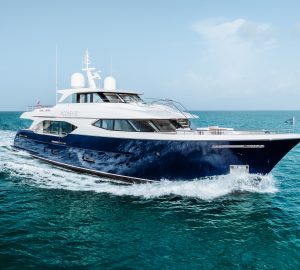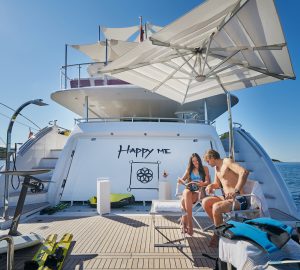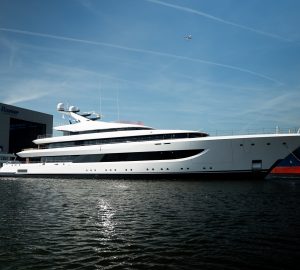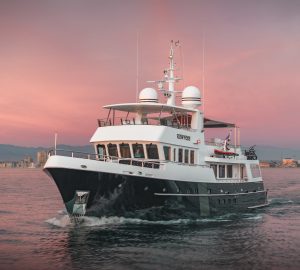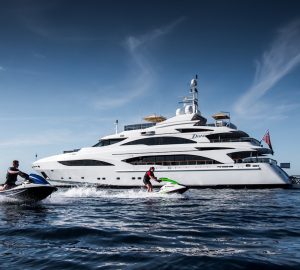After leaving Las Palmas in Spain on April 25 at 11:00 pm (local time), the largest solar boat in the world, PlanerSolar, arrived in Marigot, St. Martin in French West Indies, on May 18 at 6:32 am (local time), 22 days later. It is a new victory for the MS Tûranor PlanetSolar who smashed her own world record speed for a solar-powered transatlantic crossing, set in 26 days during her trip around the world.
This new achievement is part of PlanetSolar’s commitment to pushing the limits of technology even further during her 2013 missions, and above all, is a confirmation of the ship’s improvements following maintenance and optimization work. The ship will remain docked in the idyllic Fort Louis Marina in Marigot from May 18 – 22. She will then head for Miami (United States), where she will begin her “PlanetSolar DeepWater” scientific expedition along the Gulf Stream.
During the trip around the world (2010-2012), the MS Tûranor PlanetSolar sailed for 26 days from one side of the Atlantic to the other, thereby claiming the world record speed for a solar-powered transatlantic crossing and her first entry in the Guinness World Records™. It hasn’t been broken since. It was not until 2013 that the largest solar boat in the world repeated the trip to realize a new global accomplishment: 22 days, 12 hours, and 32 minutes.
Having left from Las Palmas (Spain) on April 25, 2013, the ship sailed 2867 miles (5310 km) across the Atlantic Ocean at the average speed of 5.3 knots before reaching Marigot (St. Martin, French West Indies) on May 18th. This new record is currently undergoing an authorization process at Guinness World Records™.
During the transatlantic crossing, the crew encountered phases of substantial cloudiness for several consecutive days, and regularly had to optimize their route. The MS Tûranor PlanetSolar’s captain, Gérard d’Aboville, explains that “it was necessary to make a significant deviation to the south, which increased the travelling distance by 7%, but enabled us to avoid winds and unfavorable swells.” Furthermore, the ship’s energy consumption had to be carefully managed in order to maintain an efficient speed and reach St. Martin in less than 26 days.
It is with great pride that the crew set foot on dry land after 22 days at sea: “Once again, the boat provided a brilliant demonstration of solar energy’s potential by breaking its own speed record for a transatlantic crossing set in 2010, improving it by 4 days, 6 hours, and 38 minutes. It is difficult to compare the two crossings because they were conducted at very different times of the year.
But it is certain that in light of the lessons learned during the trip around the world, the major maintenance projects carried out last winter—particularly to the propulsion system—have greatly improved the ship’s performance. She will now travel to Miami to begin her second life as part of an exploratory mission along the Gulf Stream current conducted by the University of Geneva,” said Gérard d’Aboville.
The arrival of the largest solar boat in the world was also cause for celebration in St. Martin. In preparation for her arrival, PlanetSolar was able to count on support from the Fort Louis Marina as well as from the St. Martin Tourism Office. Upon her arrival, PlanetSolar received a welcome as warm as her destination.
“PlanetSolarDeepWater”, a scientific expedition on the route of the Gulf Stream
After this West Indian stopover, the solar catamaran will head to Miami (United States) to begin the “PlanetSolar DeepWater” scientific expedition. From June to August 2013, a team led by Professor Martin Beniston, climatologist and director of the Institute of Environmental Sciences at the University of Geneva (UNIGE), will sail along the Gulf Stream ocean current, one of the most important regulators of the European and North American climates, covering over 8,000 kilometers from Miami (United States) to Bergen (Norway), by way of New York (United States), Boston (United States), and Reykjavik (Iceland).
A continuous series of physical and biological measurements will be taken in the air and water to study the key parameters of climate regulation, especially atmospheric aerosols and phytoplankton. Powered by solar energy, the ship does not emit any polluting substances that could distort the data collected.
The scientists’ objective is to understand the complex interactions between physics, biology, and climate, eventually enabling them to refine climate simulation, especially as it relates to energy exchanges between the ocean and the atmosphere. Furthermore, the project will raise the general public’s awareness of climate issues by developing educational activities and resources.

